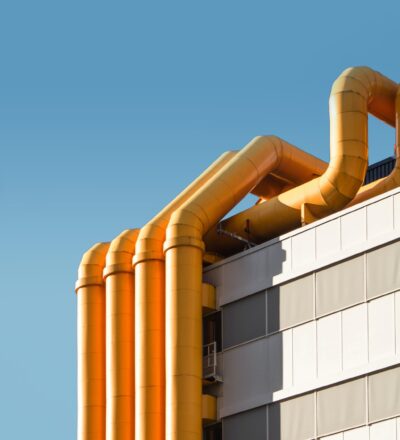The European Green Deal envisions a CO2-neutral Europe in 2050. Large-scale green hydrogen production by water electrolysis plays a key role in realizing this goal. Currently, there are multiple technology options to split water into hydrogen and oxygen. A currently underexplored option is the Solid Oxide Electrolysis Cells (SOEC) technology. How can we explore the potential of solid oxide electrolysis?
Alkaline Water Electrolysis (AWE) and Proton Exchange Membrane (PEM) Electrolysis are the two most mature technologies for green hydrogen production at the moment. But, another promising technology is Solid Oxide Electrolysis Cells (SOEC) technology. This technology will be explored for large-scale green hydrogen production and carbon monoxide production from carbon dioxide in our new project: Next Level Solid Oxide Electrolysis.
Exploring SOEC Technology
ISPT aims to explore the upscaling potential of the SOEC (Solid Oxide Electrolysis Cells) technology for the Dutch process industry. We do this together with partners TNO, Voltachem, Air Liquide, BP and OCI. Through this project, the feasibility of SOEC-technology in the chemical and fuels industry will be evaluated.
The potential of solid oxide electrolysis
SOEC is a complex technology that converts steam and/or carbon dioxide directly into hydrogen gas, carbon monoxide, and oxygen. Compared to the wide applicated AWE -and PEM technologies, SOEC has two main advantages:
- A higher conversion efficiency due to favorable thermodynamics and kinetics at higher operating temperatures.
- The potential to be integrated with a range of existing down-stream industrial processes. This will result in the generation of synthetic fuels, methanol, ammonia and recycling of captured carbon dioxide.
This makes SOEC very promising. However, further insights are necessary to fulfill the technical and economic viability of integration in existing processes for the fuel and chemical industry.
The project aim
In the SOEC project we are investigating the further potential of the SOEC technology on an industrial scale. This project aims to investigate the viability of integrating the SOEC technology in three different use cases:
1. Hydrogen production in an ammonia plant;
2. Syngas and green hydrogen integrated with blue hydrogen production and downstream processing to e-fuels;
3. Carbon monoxide production at a gas-producing plant.
For each use case the upscaling options of the SOEC technology are in the industrial environment. The research focuses on the evaluation of technical and economic aspects. This will result in a roadmap for a SOEC demo plant for integration in a (petro)chemical plant.
Acknowledgement
This project is co-funded with subsidy from the Topsector Energy by the Ministry of Economic Affairs and Climate Policy.
